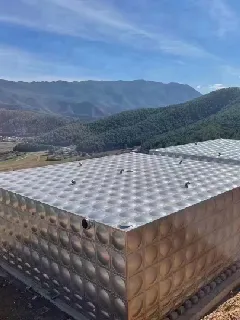loading...
- No. 9, Xingyuan South Street, Dongwaihuan Road, Zaoqiang County, Hengshui, Hebei, China
- admin@zjcomposites.com
- +86 15097380338
- Welcome to visit our website!
anti slip flooring
The Importance of Anti-Slip Flooring Ensuring Safety and Comfort in Various Environments
In our everyday lives, the safety of our surroundings often goes unnoticed until an unfortunate incident occurs. One area where this is particularly crucial is flooring, as slips and falls can lead to serious injuries. Anti-slip flooring has emerged as a vital solution to enhance safety in both residential and commercial spaces. This article explores the significance of anti-slip flooring, its types, and where it can be effectively implemented.
Understanding Anti-Slip Flooring
Anti-slip flooring refers to surfaces designed to decrease the likelihood of slips and falls. This is achieved through various methods, including the use of textured materials, specialized treatments, and coatings that increase traction. Such flooring options are commonly found in areas prone to moisture, such as kitchens, bathrooms, commercial kitchens, and outdoor spaces.
Why Is Anti-Slip Flooring Important?
1. Preventing Accidents The primary benefit of anti-slip flooring is the prevention of slips and falls. According to the National Floor Safety Institute (NFSI), falls are a leading cause of injuries in homes and workplaces. By installing anti-slip flooring, the risk of accidents can be significantly reduced.
2. Legal Compliance Many industries are subject to regulations that mandate safety measures, including the use of anti-slip flooring. Compliance with these regulations not only protects individuals but also shields businesses from potential lawsuits and liability claims.
3. Enhancing Comfort Anti-slip flooring contributes to the overall comfort of a space. In areas where people stand for long periods, such as restaurants or shops, the reduced risk of slipping can lead to a more relaxed and comfortable environment, encouraging customer satisfaction and employee productivity.
4. Durability and Maintenance Most anti-slip flooring options are designed not just for safety but also for durability. They are often resistant to wear and tear, making them suitable for high-traffic areas. Additionally, many types are easy to clean and maintain, ensuring they remain effective over time.
Types of Anti-Slip Flooring
anti slip flooring

There are several types of anti-slip flooring, each suited for different environments
1. Vinyl Flooring Known for its versatility and comfort, vinyl flooring can be treated to increase its slip resistance. It's commonly used in residential kitchens and bathrooms.
2. Tile Flooring Porcelain and ceramic tiles can be obtained with textured surfaces. These tiles offer a combination of aesthetic appeal and safety, making them popular in both homes and businesses.
3. Rubber Flooring Ideal for commercial spaces such as gyms and healthcare facilities, rubber flooring provides excellent traction and cushioning, reducing the risk of slips and falls.
4. Concrete Coatings For outdoor areas or industrial settings, specialized anti-slip coatings can be applied to concrete surfaces. These coatings create a grippy surface without compromising the durability of the concrete.
Where to Implement Anti-Slip Flooring
Anti-slip flooring should be installed in areas where the risk of slipping is heightened. Some common locations include
- Kitchens Both residential and commercial kitchens are prone to spills, making anti-slip flooring crucial for preventing accidents. - Bathrooms Water accumulation in bathrooms significantly increases the risk of slips, thus necessitating the use of anti-slip tiles or vinyl flooring. - Entryways With dirt and water being tracked in, entryways can become slippery. Anti-slip matting or textured surfaces can help mitigate this risk. - Outdoor Spaces Patios, pool areas, and walkways can benefit from anti-slip coatings, ensuring safety in wet conditions.
Conclusion
Investing in anti-slip flooring is a proactive measure that enhances safety, comfort, and durability in various environments. With the potential to prevent accidents, comply with legal standards, and create a welcoming atmosphere, anti-slip flooring is an essential consideration for homeowners and business owners alike. By understanding its importance and exploring the available options, we can create safer spaces for everyone.
-
The Rise of FRP Profiles: Strong, Lightweight, and Built to LastNewsJul.14,2025
-
SMC Panel Tanks: A Modern Water Storage Solution for All EnvironmentsNewsJul.14,2025
-
GRP Grating: A Modern Solution for Safe and Durable Access SystemsNewsJul.14,2025
-
Galvanized Steel Water Tanks: Durable, Reliable, and Ready for UseNewsJul.14,2025
-
FRP Mini Mesh Grating: The Safer, Smarter Flooring SolutionNewsJul.14,2025
-
Exploring FRP Vessels: Durable Solutions for Modern Fluid HandlingNewsJul.14,2025
-
GRP Structures: The Future of Lightweight, High-Performance EngineeringNewsJun.20,2025
